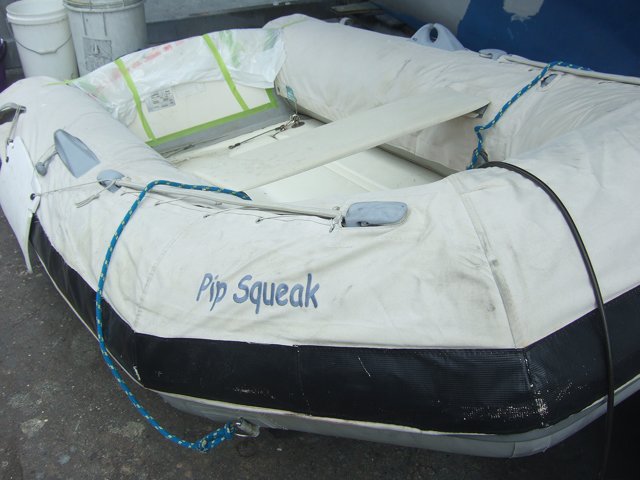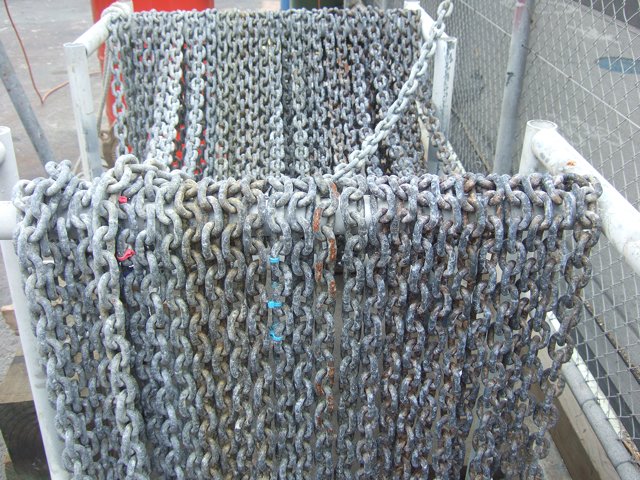Good Progress, but it feels like winter again!

Aurora_b
Mike and Liz Downing
Wed 14 Dec 2011 10:42
|
The ongoing work on the skeg has finally been completed
and we're now preparing to antifoul the bottom. The first coat of
primer, on the skeg and other parts that need priming, went on at the
weekend which was encouraging, and antifouling proper should
have been underway this week. But the weather hasn't played ball -
it's been wet and miserable all week so far and they're forecasting more heavy
rain for the rest of the week! So no painting until the weekend at the earliest.
We have 3 different types of antifouling and need 6 good days to do
it - 3 days for the antifouling on and just below the waterline and 3
days for the line above it and the bottom of the boat beneath it (as they're
separate areas they can be painted at the same time).There was a slim chance
that we might get back in the water before Christmas, but it's
looking unlikely now. The boatyard travelift (that cranes boats in and
out of the water) shuts down for 2 weeks over Christmas, so we hope we'll
be ready as soon as they return to work, in 2012!
While waiting for the paint to dry there's plenty of other
things to get on with. The dinghy's been lowered from the deck, taken out
of it's bag and pumped up for the first time since February. So far the air is
staying in it, which is a good sign! It's a rib, so glassfibre with a hypalon
tube round the top, but it does have a wooden transom that will need to be
repainted. And then there's the anchor chain to maintain. 300ft of 10mm
chain (a right imperial/metric mix) and about 85% of it is fine. The
galvanisation on the remaining 15%, which is scattered throughout the whole
length, is in various states of depletion - in other words, rusty! It's the
result of anchoring with the chain lying over coral. We aim never to anchor in
coral, but in a few places there was no option, and even if
anchoring in sand, it is not always possible to ensure the chain
doesn't cross coral at some point. As the boat moves in the swell and wind, so
the chain will rise and fall and move around on the sea bed, and if any
links are on coral the galvanisation is quickly rubbed off. Once
back in the chain locker it soon starts to rust. So the rusty links need to be
wire brushed, painted with a chemical that treats the rust
and regalvanised. It is possible to get the whole chain regalvanised
professionally, but our chain is high tensile chain (quite a bit
stronger than normal chain) and there are reports that the regalvanisation
process can make it brittle - not something we would want to risk! Then
there's the basin taps to replace (bought in 2005 and carried halfway round the
world!), the green (solar, wind and tow) generators to
rewire (found that full lock on the wheel is squashing the wires, and
we need to wire up our new solar panel) - the list goes on, but it is good to be
able to get on and fix things that we've wanted to do for months, if not
years.
'Learning the ropes' is literally quite a
challenge on Aurora B, and while the skeg work has been going on, we've
added one more. On a night watch on one of our longer passages,
and with nothing better to do, I counted the ropes we have to control
the boat when fully rigged, and it came to 42. So now we have 43 (so it's no
longer the answer to life, the universe and everything!). The new
addition is a dedicated trysail halyard. For the longer passages the trysail
(storm sail) is hanked on its dedicated track at the bottom of the mast, but if
we want to hoist it, I have to climb quit high up at the mast to undo the
mainsail halyard before I can attach it to the trysail. Generally when thinking
of setting the trysail, the conditions and sea state are such that the last
thing I want to be doing is climbing high up anywhere. Hence a dedicated
halyard that's always attached, and it's bright yellow to make it easier to
identify on a dark and stormy night!
 Finally, the skeg finished and primed ready for
antifouling. Unlike the old one, the new bottom
rudder
bearing has
a grease channel (under the
bolt), so grease can now be added whenever the boat's out
of
the water, or I feel like diving under with
spanners and a grease gun in hand. As a result
we hope
the bearing will last a lot
longer and we won't have to
take the skeg apart again for a very long time!
 The dinghy sees daylight after 9 months in
its bag. The UV cover over the tubes, made by Mervyn our
friendly
Rastafarian canvas
man
in Trinidad, was left
on and came out okay (and not covered in mould and
mildew
that we feared).
 Just a few links to
check!
|